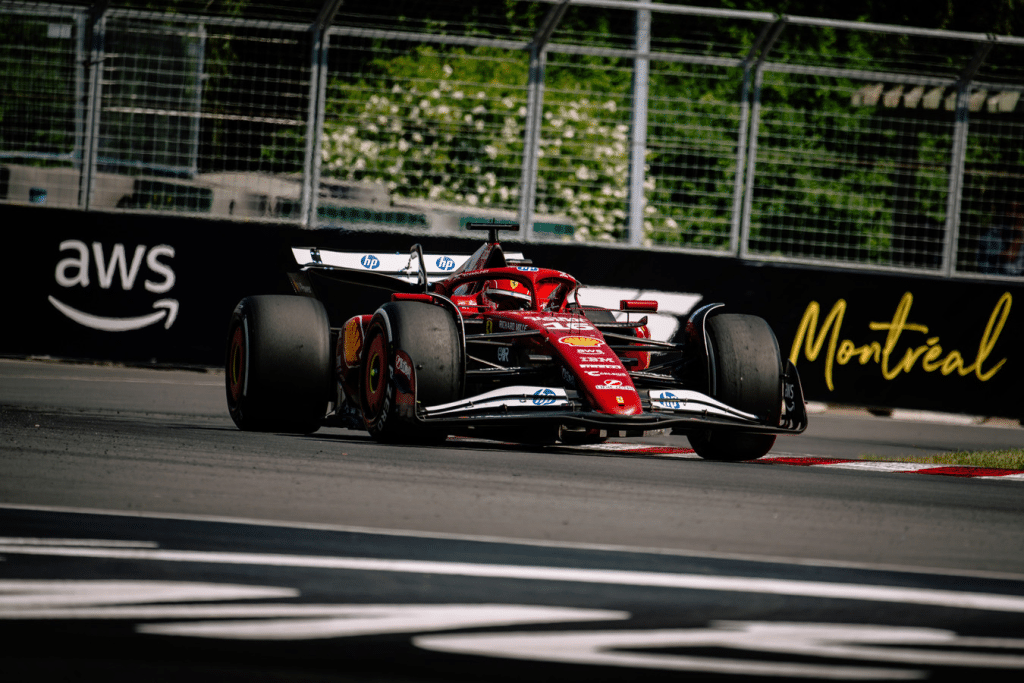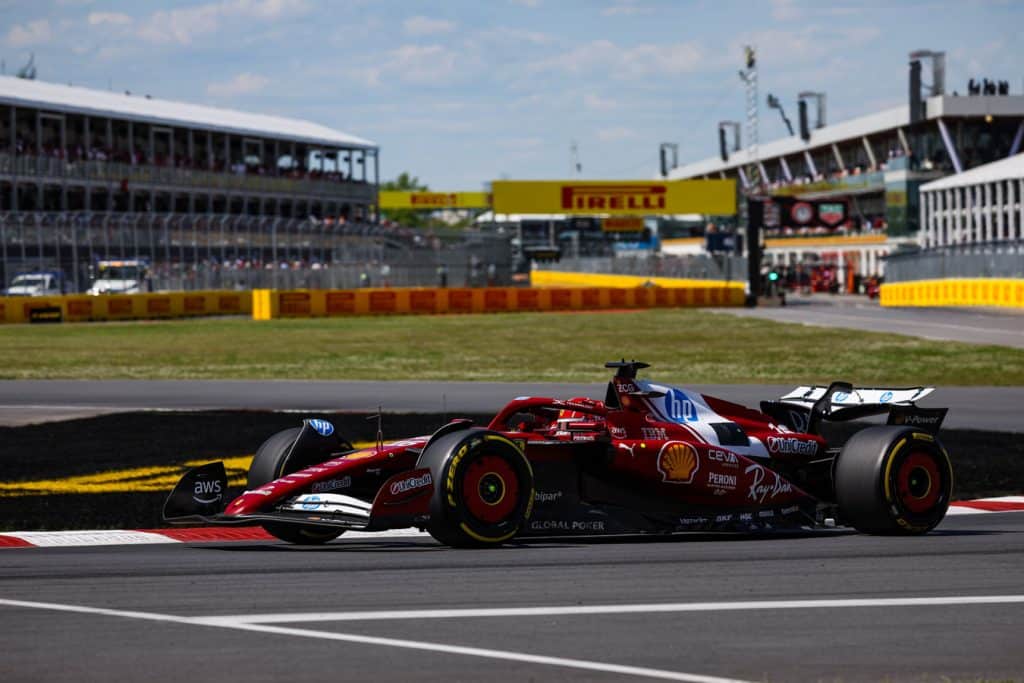In Canada, Ferrari and Charles Leclerc opted for a two-stop strategy, but the data suggests that a one-stop could have been enough—and might have made the difference. So, what went wrong?
The Canadian Grand Prix turned out to be a tough test for Charles Leclerc and Ferrari, where race strategy played a crucial role. From tire choices and pit stops to key moments battling rivals like Lando Norris, the weekend exposed the struggles of a Ferrari unable to maximize its potential—leaving room for a bitter reflection on what could have been, but ultimately wasn’t.
Leclerc’s race strategy was shaped as early as Saturday, when the Monegasque was forced to abort his final flying lap in qualifying—despite setting the fastest first sector—due to a mistake partly caused by traffic from Isack Hadjar ahead of him. Starting eighth on the grid, car number 16 opted for hard tires, just like his “row mate” Norris in seventh, with a shared goal of bouncing back from a disappointing qualifying session.

After a few laps of settling in, on lap 9 Leclerc—still in eighth—begins to pick up the pace, while those around him are on soft tires. Then comes the first key radio message on lap 10: no tire management, but plenty of struggle. Over the next ten laps, all the front-runners—except for car number 16 and the two McLarens of Piastri and Norris—pit for their first stop. Leclerc finds himself up in third, holding a valuable card to play in his climb through the field. His pace improves and begins to match Norris’, who, meanwhile, starts to report graining but is reassured by the team that the situation is under control.
The gap between Norris and Leclerc drops from 3 seconds to 2.5, as radio communications begin within the Ferrari garage to define the strategy: the pit wall remains committed to Plan B (a two-stop), while the Monegasque pushes for Plan C (a one-stop). This becomes a crucial moment to assess whether—and how much—to extend the stint on hard tires, which, according to Pirelli’s predictions, could last around forty laps.
On lap 27, virtual race leader George Russell takes the (real) second place from Leclerc; Verstappen soon tries to follow suit but fails, as the Ferrari driver holds on to third without much trouble. Just two laps later, however, comes the call to pit for a second set of hard tires—much to Leclerc’s confusion, given his strong pace and the fact that, by regulation, he’ll now be forced to make another mandatory stop to run the medium (or soft) compound.
On lap 30, Norris also heads into the pits—but switches to medium tires, meaning the McLaren driver could, if he chooses, finish the race without any further stops. The decision seems to pay off: Norris flies in his second stint and closes in on the four race leaders, while Leclerc struggles on the hard compound.
On lap 47, however, Norris is called back into the pits for a second set of hards, and Leclerc—now lapping at the same pace as Russell—takes the lead of the race, albeit only virtually: a second pit stop would drop him back to sixth, and that’s exactly what happens on lap 54, when car number 16 switches to the medium compound.
On lap 59, Esteban Ocon and Carlos Sainz come into the pits for their first and only stop of the day, switching from hards to mediums and proving that the one-stop strategy was indeed viable. In the closing stages, the top five (including Norris) are covered by just over five seconds, while Leclerc is left ruing a missed opportunity, sitting 13 seconds adrift of fifth place, occupied by McLaren’s number 4.
Norris’s late retirement lifts the Monegasque into the top 5, but the 10 points earned are little consolation for a weekend that never went his way, starting with the crash in Friday morning’s FP1 that forced him to miss the rest of the day.
Data on the race strategies of all 20 drivers show that Leclerc and Stroll (who finished 17th) were the only two to choose a hard-hard-medium approach, which, in hindsight, didn’t pay off as well as Norris’s hard-medium-hard strategy. The Canadian Grand Prix thus proved to be yet another wasted race for Ferrari and Leclerc, who left the airport once again this season with a bitter taste, lamenting what could have been but wasn’t.
Photo: Scuderia Ferrari Multimedia

